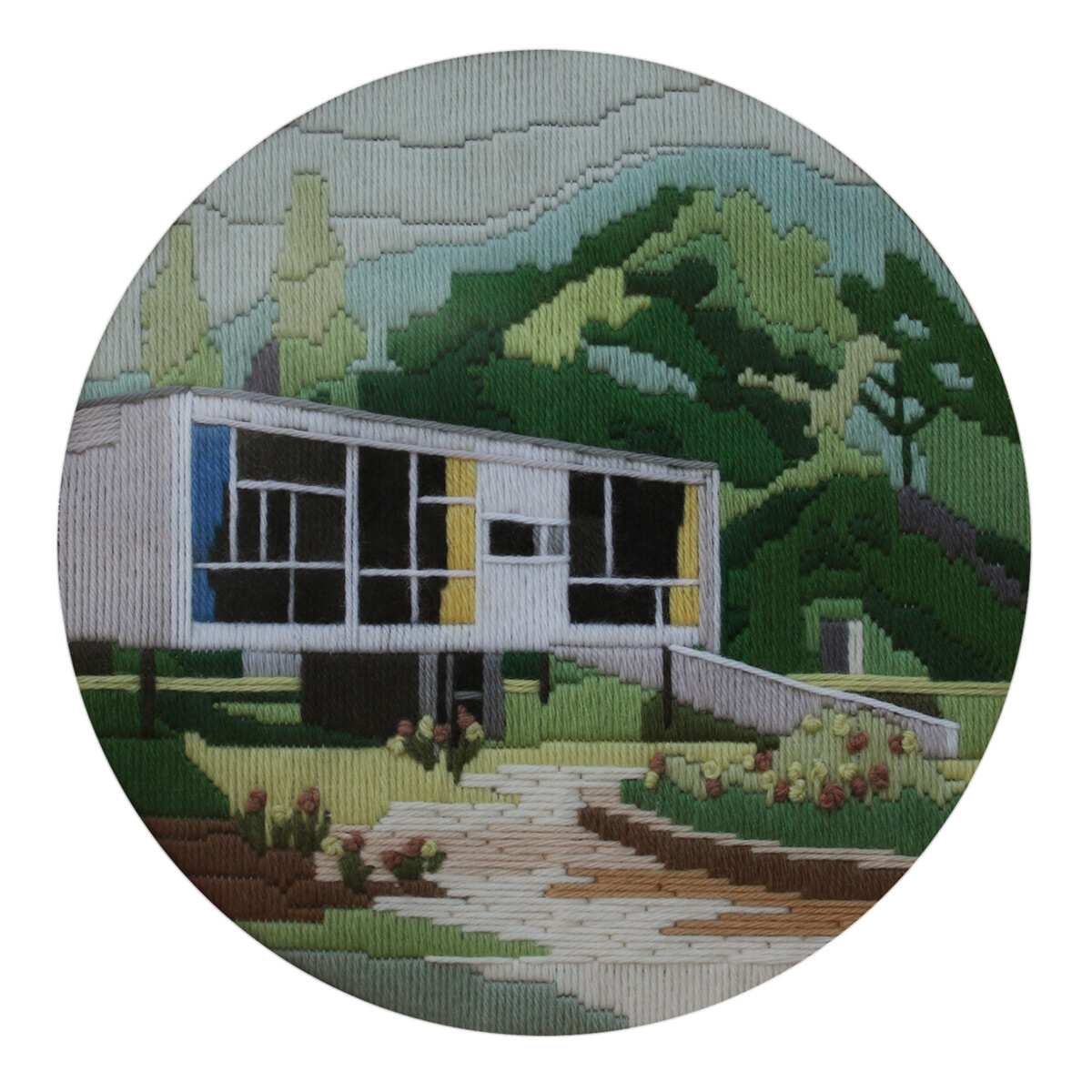Matt de Moiser in Conversation with Noella Lopez
 (2)-230x230.jpg)
I first met Matt when we were both directors on the NAVA board. He described himself as an artist who assemble Laminates and works with IKEA furniture. I was intrigued and had to find out more! In fact, although it is what Matt does, he actually re-interprets the Australian romantic view of its suburban landscape. In an additional twist, he re-uses and reinvents existing artworks, craft items and furniture giving them a new meaning and a contemporary interpretation.
Driven by using and experiencing unusual materials and taking them out of context, as much as by recycling and reinventing our imagination, stories and past perceptions, de Moiser creates with his evolving practice an intriguing, humorous and versatile journey.
Using and re-using everyday household objects, mediums and materials as the basis for new works that speak about the Australian suburban condition are your artistic trademark. “The objects we live with have power and meaning; not because of what they are but because of what we bring to them.” With the Composite Series, you have assembled found paintings belonging to other artists. In that context, can you describe how the Composite Series informed and allowed further exploration of your practice?
I've always used everyday household objects, mediums and materials in my work. It's an effective way of talking about the here and now and it helps people to relate to and connect with the work, sometimes in profound ways. The Composite series is no different except that I'm using found artworks this time. I guess the inference is that in the end, even art is a product – albeit a cultural one for an exclusive market. Like a lot of my work, the Composite series continues my search for some sort of formal abstraction in the world around me. Landscape painting is a construct anyway, so the Composites can be thought of as constructs of constructs – or perhaps even as meta-landscapes; in other words, landscapes about landscapes. I also believe that as artists we can learn a lot from software engineers and scientists. The Composite series challenge the sanctity of art and propose a new way of thinking about and making art in a more open and collaborative way.
You have worked with Laminex pieces, IKEA furnitures, found paintings and now found long stitch embroidery! There seems to be no limit to your exploration of materials, meaning and explorations. I find the leap from the Laminex Series to found long stitch embroidery with the Re-Stitched Series rather intriguing and tongue in cheek. Can you tell us how this Series unfolded? About the material and your relationship to it? How did you enjoy it? Were these embroideries really found?
Long stitch embroidery was very popular when I was growing up. My Mum, my Aunty and my Grandma made them and there were always one or two hanging in my friends’ houses too. You could buy them as kits in lots of different designs, but all of them invariably depicted quaint cottages or whimsical homesteads in lush gardens or idyllic semi-rural settings. I became interested in them again for their value as a unique historical document and social record; not about where we live or how, but about how we wish we could live. They capture our ideas and ideals of home and by extension according to Jungian psychology, who we are or would like to be.
The original long stitch embroideries I use are from op-shops or donated by friends and family. I carefully unpick the original dwelling (usually a storybook cottage or country homestead) and replace it with different architectures that challenge traditional notions of home. So for example the very popular long stitch embroidery of Cook's cottage was unpicked and re-stitched with the Rose Seidler House in its place. Like a lot of my work, it is intricate and very time consuming but the process is cathartic in a way too.
Following on from your latest body of work, tell us about your next explorations and inspirations and what you are currently working on.
I'm currently planning to go to auctions to acquire more paintings to work with for my Composite series. I know some people who were challenged by the Composite series that have been reassured knowing the original paintings used were found at op-shops or thrown away. I suppose their reasoning is that these works no longer have any value so it's ok to use them, but this is incorrect. Besides the underlying assumption that the market is always a good judge of what is important, valuable or good, it also misses the point. Up until now, I have only used paintings from op-shops because they are affordable and readily available. I'm not selecting works that I think are bad or should be destroyed. I'm only using works that I like, or that have some quality that I can respond to. I think the stronger the works, the better and more interesting the end result – both visually and conceptually. Imagine a dialogue between Jeffrey Smart and Reko Rennie or Howard Arkley and Frederick McCubbin. The possibilities are very exciting.
Matt de Moiser 2015
Write a comment
Your Name:Your Comment: Note: HTML is not translated!
Enter the code in the box below:
By posting this comment, you agree to abide by Noella Lopez Gallery Privacy Policy and Terms and Conditions.

.jpg)





